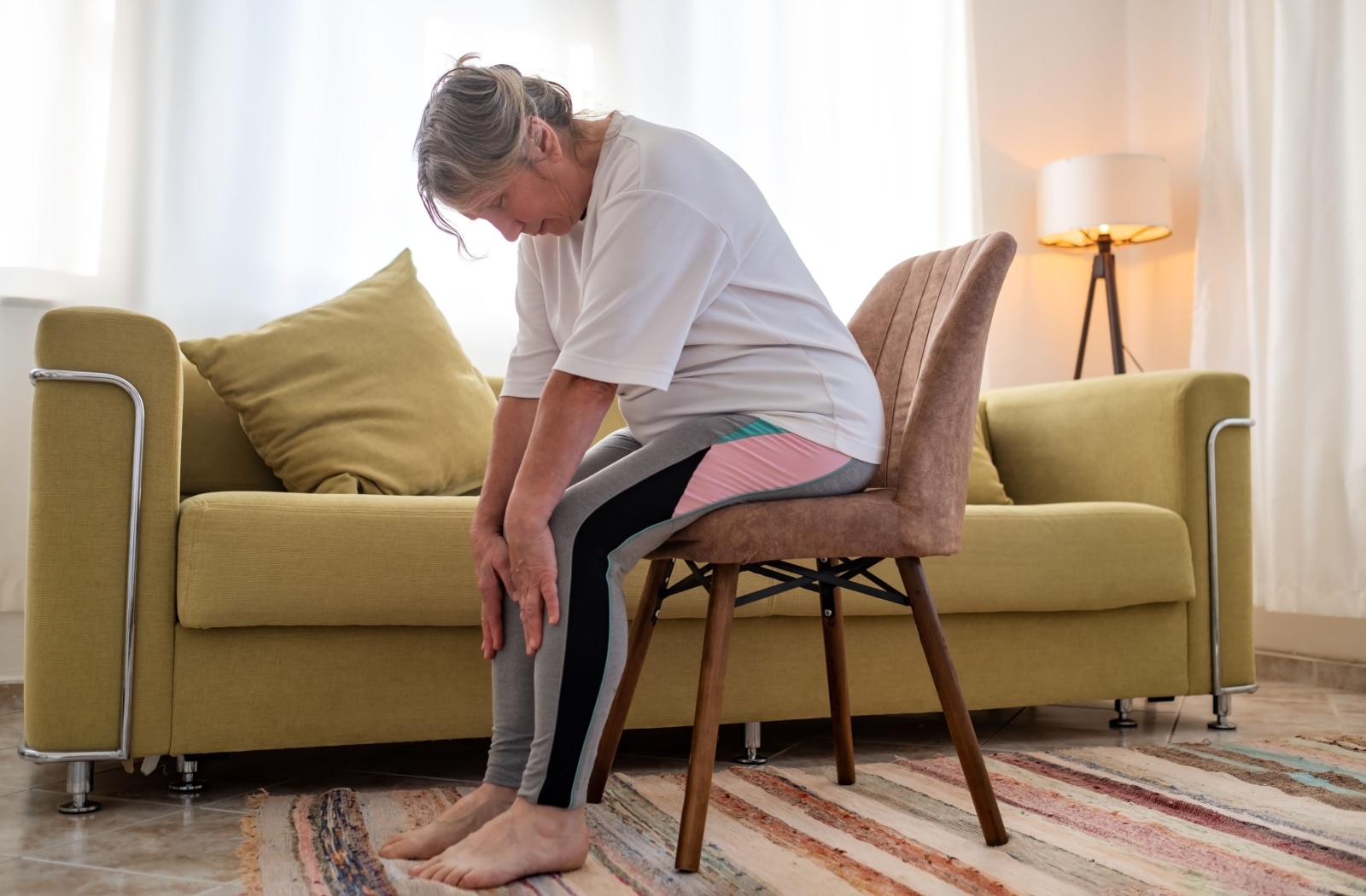Key Takeaways
- Chair exercises provide safe, accessible fitness options for all mobility levels
- Regular movement helps maintain strength, balance, and independence in daily activities
- You can start with just 10–15 minutes daily, using a sturdy chair and household items
- Combining strength, flexibility, and cardio exercises creates a well-rounded routine
- Senior living communities offer structured programs to support your active lifestyle
Staying active doesn’t require expensive gym memberships or complicated equipment. Chair exercises offer you a practical way to maintain your strength, flexibility, and balance from the comfort of your own home or community. Research shows that physical activity for older adults provides numerous health benefits and helps prevent chronic diseases.
Chair exercises are among the most accessible and effective ways for seniors to stay physically active while minimizing the risk of falls or injury. These seated and supported movements allow you to work on your fitness regardless of your current mobility level or physical limitations, and they complement other balance exercises for aging adults with many different lifestyles, such as personal care and memory care.
Why Chair Exercises Work for Seniors
Chair exercises provide a stable foundation that reduces your risk of falling while still challenging your muscles and cardiovascular system. The chair acts as both support and resistance, allowing you to focus on proper form and movement quality.
These exercises help you maintain the strength needed for daily activities like getting dressed, cooking, and moving around your home. Regular movement also supports better circulation, joint flexibility, and mental well-being.
Getting Started: What You Need and Safety Tips
Choosing the Right Chair
Select a sturdy chair without wheels that won’t slide or tip during your exercises. Your chair should allow your feet to rest flat on the floor with your knees at about a 90-degree angle.
Avoid chairs with arms if possible, as they can limit your range of motion during upper body exercises. Place your chair on a non-slip surface away from walls or furniture that might interfere with your movements.
Safety Guidelines
Start with just a few repetitions of each exercise and gradually increase as you build strength and endurance. Quality of movement matters more than quantity—focus on controlled, smooth motions rather than speed.
Stop immediately if you experience pain, dizziness, or shortness of breath. Wear supportive, non-slip shoes and keep a phone within reach in case you need assistance.
Strength-Building Chair Exercises
Upper Body Movements
Seated shoulder presses using light weights or water bottles help strengthen your shoulders and arms. Start with both arms raised to shoulder height, then press upward until your arms are fully extended overhead.
Bicep curls can be performed with household items like soup cans or filled water bottles. Shoulder blade squeezes improve your posture by pulling your shoulder blades together and holding for a few seconds.
Lower Body Strengthening
Sit-to-stand exercises mimic the movement you use dozens of times each day. Start seated, then stand up without using your hands for support, and slowly lower back down.
Seated leg extensions involve straightening one leg at a time while remaining seated. Heel and toe raises strengthen your ankles and improve balance by lifting your heels off the ground, then switching to lift your toes.
Core Stability Exercises
Seated twists engage your abdominal muscles by rotating your torso left and right while keeping your hips facing forward. Pelvic tilts involve gently arching and flattening your lower back while seated.
Extended leg raises challenge your core by lifting one knee toward your chest while maintaining good posture. These movements support better balance and stability during daily activities.
Flexibility and Mobility Chair Exercises

Stretching Movements
Seated hip stretches help maintain flexibility for walking and climbing stairs. Place your ankle on the opposite knee and gently lean forward to feel a stretch in your hip.
Side bends keep your spine mobile by reaching one arm overhead and gently leaning to the opposite side. Chest stretches counter the effects of forward head posture by opening your chest and shoulders.
How Often Should Seniors Do Chair Exercises
Gentle stretching can be done daily and feels particularly good in the morning or after sitting for long periods. Listen to your body and adjust frequency based on how you feel. Some days you might have more energy for a longer session, while other days a few gentle stretches might be more appropriate.
Cardio and Coordination Chair Exercises
Heart-Healthy Movements
Seated jacks involve moving your arms and legs in a jumping jack motion while remaining seated. This movement increases your heart rate without the impact of traditional cardio exercises.
Chair marching involves lifting your knees alternately as if marching in place while seated. Arm circles and wrist movements improve circulation and can be particularly helpful if you spend time doing activities like reading or crafts. These activities can be great additions to other indoor activities for seniors.
Balance and Coordination
Ankle alphabet exercises involve “writing” letters in the air with your toes, which improves ankle mobility and coordination. These movements help maintain the fine motor control needed for walking on uneven surfaces.
Standing exercises using your chair for support can include weight shifts from one foot to the other. These movements challenge your balance while providing the security of having support nearby.
Supporting Your Active Lifestyle in Senior Living
Many senior living communities recognize the importance of regular physical activity and offer structured fitness programs tailored to different ability levels. These programs often include chair exercises as part of a comprehensive wellness approach.
Contact Woodbridge Place today to learn more about how our community supports active lifestyles and schedule a tour to see our wellness programs in action.










